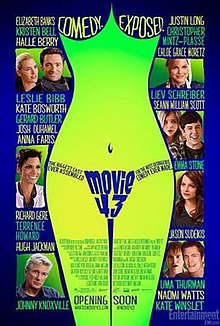I have a question of the sort that is usually answered somewhere on the Interwebs. But I can't find the question asked anywhere, nor evidence that would allow me to answer it.
So maybe it is not a good question.
But it's my website, and I'm going to ask it anyway.
It's about that photograph of President Barack Obama released by the White House reportedly showing him skeet shooting. Maybe it's legit. I don't know.
But before I get to my question, let me ask you this:
Do any of you remember Michael Dukakis?
Children, he ran for President against George H.W. Bush -- the first Bush -- in 1988. He was the governor of Massachusetts. In July 1988, he was leading Bush in the polls 55%-38%. (
"Dukakis Widens Lead, According to New Poll")
He lost.
Lost pretty bad. Back in those days, the Republican states were blue.
Part of the reason he lost was because he, or his handlers, thought the public was stupid, and the public figured it out.
I'm not sure if he was one of the closest things to a pacifist we've ever had asking people to vote for him to have charge of defending the country. But it is not unfair to say that, as these things were judged back then, he was, uh, soft on defense.
Everybody knew this. Didn't seem to hurt him in the polls. But his handlers were worried.
To fight back against the Bush campaign's charges of excessive doveishness, his handlers had what they thought was a bright idea.
They suited him up in tank-corps duds, plopped him into an M1 Abrams tank, and turned the camera on as he tootled around, grinning and waving. Believing that this exhibition would, if not demonstrate, at least symbolize, his deep devotion to national defense.
Didn't work.
Backfired.
He looked like a Westminster poodle sniffing for IED's on a Kabul backroad.
The Republicans converted that footage into a campaign ad that ran the clip of his tanky perambulations under a text purporting to describe his positions opposing various defense initiatives.
(Dukakis Tank Commercial)
Dukakis lost for lots of other reasons. He took enormous heat for his unbelievable record of commuting the sentences of murderers -- 21 first-degree murderers, and 23 second-degree murderers -- dramatized by the Republicans in the famous "Willie Horton" ads.
Also, in those more enlightened times, my children, it was actually possible to be too left-of-center to be elected.
(And, my Republican pals, let's not forget G.H.W. Bush's "read-my-lips-no-new-taxes" fib.)
But looking absolutely ridiculous, not to mention hypocritical, in that tank and combat getup could not have helped the governor.
Yes, folks, I thought of those warlike images of Dukakis when I saw the picture of POTUS firing the shotgun at the Camp David skeet range, offered by the White House in support of his earlier boast that "we do skeet shooting all the time," the WH apparently hoping to deflect the anger of his gun-owning constituents (a constituency that has grown dramatically in recent weeks) over what they had heard about his position on this part of their personal property.
The first thing I thought was: Would someone who engaged in this activity "all time time" refer to it as "doing skeet shooting?"
But when I saw the photograph, I thought something else.
To make sure I wasn't being unfair to our President, since I do not do skeet shooting, I did some due diligence, which consisted of entering the phrase "skeet shooting" into the friendly Google pane, and clicking "Images." Here are some of the first photos that popped up:
So as I understand matters, you get your gun ready, put the thing up to your shoulder, yell "pull" or belch or something, and the clay pigeon -- I guess it's not called a "skeet" -- launches up into the air and you shoot the gun at it hoping to strike it with some portion of your shotgun pellets.
The key phrase there, supported by the admittedly anecdotal evidence of my Google investigation, is "up into the air."
Now look at the photograph released by the White House:
There are some obvious problems with this portrait. The dark glasses; no shoulder pad; an oddness in the form. And only one photograph? No proud pose next to the shattered clay pigeon?
But my question is:
What the heck is he shooting at?
For certain, despite a very slight upward angle to the barrel, nothing that is very far off the ground.
Perhaps he prefers to slay his clay pigeons when they're not moving and was launching a preemptive strike on the trap.
Perhaps he was exercising extreme deliberation, or extreme indecisiveness, and did not pull the trigger until the clay pigeon was approaching the earth.
Perhaps a drone -- or, better, a SEAL team -- had already taken out the clay pigeon followed by a hastily-arranged burial at sea observing all clay-pigeon post-mortem spiritual requirements -- and POTUS was just firing the gun for the photo op.
Perhaps there was no clay pigeon; no trap; no nothing.
Look, maybe he was firing at a duly launched clay pigeon. I don't know. But this photograph not only does his
bona fides on gun ownership no good, its facial inauthenticity undermines the boast it was released to support. And, as Governor Dukakis discovered with his own
machismo initiative, it makes him look preposterous.
It's a freeze-frame parable of this man -- a lot of noise and smoke, looks good in jeans and shades, but, upon examination, nothing there. The picture, the story, out knowledge of him, is incomplete. Not what he says he is. Not what others claim him to be.
As I say, I don't know the result of the President's assault on the clay pigeon, if any.
But I know that he's being rightly ridiculed for that mysterious photograph and his glib claim of firearms use that required its production. (Google "obama skeet dukakis tank" and see what you get.)
And his approval rating is starting to sink. (I really wanted to write "starting to tank," but . . . no.)
Now that probably has something to do with people getting a look at their paychecks, come this new year. And there's the inevitable buyer's remorse that follows any election.
But it may, just may, have a little something to do with people beginning to understand that their intelligence is being insulted.
* * *
Twitter: @CoolHotCenter
Email: CoolHotCenter@gmail.com























